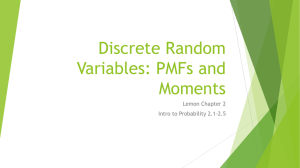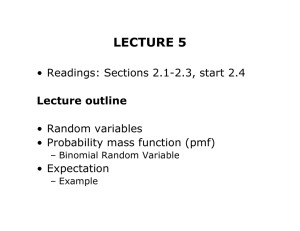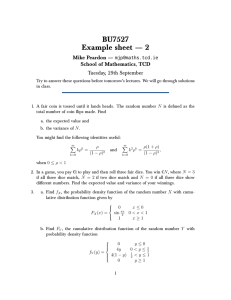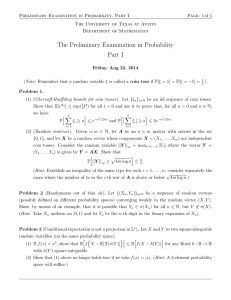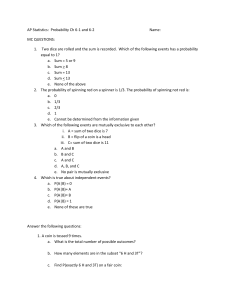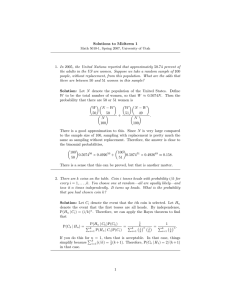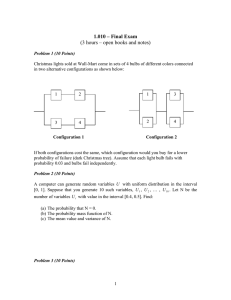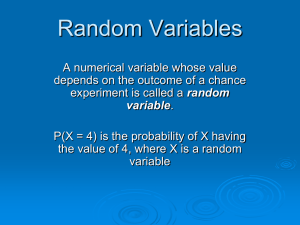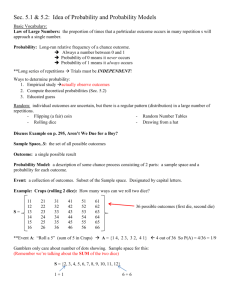Discrete RVs
advertisement
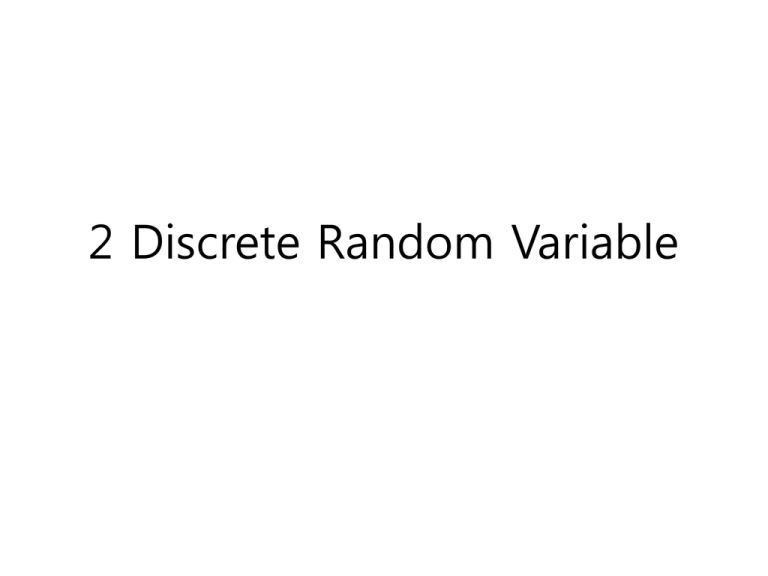
2 Discrete Random Variable
Independence (module 1)
• A and B are independent iff the
knowledge that B has occurred does not
change the probability that A occurs.
• A, B independent ⇔ P[A|B] = P[A]
• A, B independent ⇔ P(A B) = P(A) P(B)
Random Variable (RV)
• 2-1: Throw two dice. An RV X maps the
sum of the numbers of two dice from the
experiment. Describe the function X.
• 2-2: Toss a coin three times. If the number
of heads, X, is 3, the reward is 8; if X = 2,
the reward is 2; otherwise, 0. Let Y be the
RV for the reward. Describe Y.
Prob. mass function (pmf)
• 2-3: Find the pmf of X, which is the label of a
ball picked at random from an urn that contains
balls labeled from 1 to 5.
• 2-4: Find the pmf of X, which is the number of
largest face when two dice are rolled.
expectation
• 2-5: expectation of X, which is number of
heads in three tosses of a coin
• 2-6: the average value when we pick an
integer between 1 and M at random
(uniformly).
variance
• 2-7: variance of X, which is the number
of heads in two tosses of a coin
• 2-8: variance of a Bernoulli RV.
Conditional Prob.
• 2-9: Let X be the time required to transmit
a message, where X is a (discrete) uniform
RV with SX = {1, 2, …, L}. Suppose that a
message has already been transmitted for
m time units, find the probability that the
remaining transmission time is j time units.
2-10: Binomial RV
• A system uses triple redundancy for reliability.
Three microprocessors are installed and the
system is designed so that it operates as
long as one microprocessor is still functional.
• Suppose that the probability that a
microprocessor is still active after t seconds is
p = e-t.
• Find the probability that the system is still
operating after t seconds.
HW 2-1 Geometric RV
• RV M is the number of tosses of a coin
until the head first appears
• Compare two probabilities: P[Mk+j | M>j]
and P[M k]
• Think about the comparison result
HW 2-2 Poisson RV
• At a given time, the number of households
connected to the Internet is a Poisson RV with
mean 3. Suppose that the transmission bit rate
available for all the households is 20 Megabits
per second.
• Find the probability of the distribution of the
transmission bit rate per user.
– If no household is connected, the rate is
• Find the transmission bit rate that is available to
a user with probability 90% or higher.
• What is the probability that a user has a share of
6 Megabit per second or higher?
